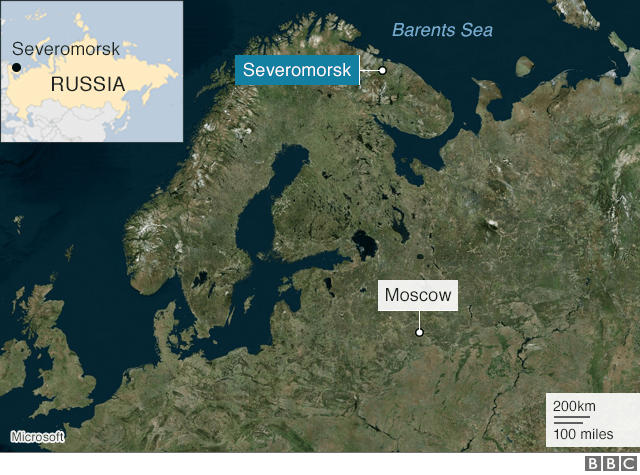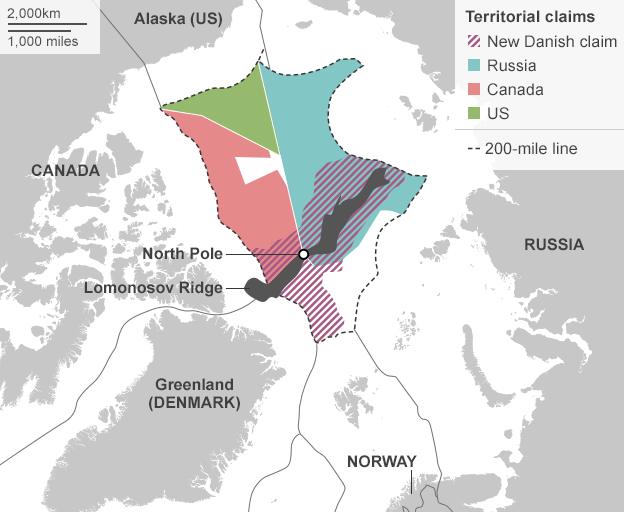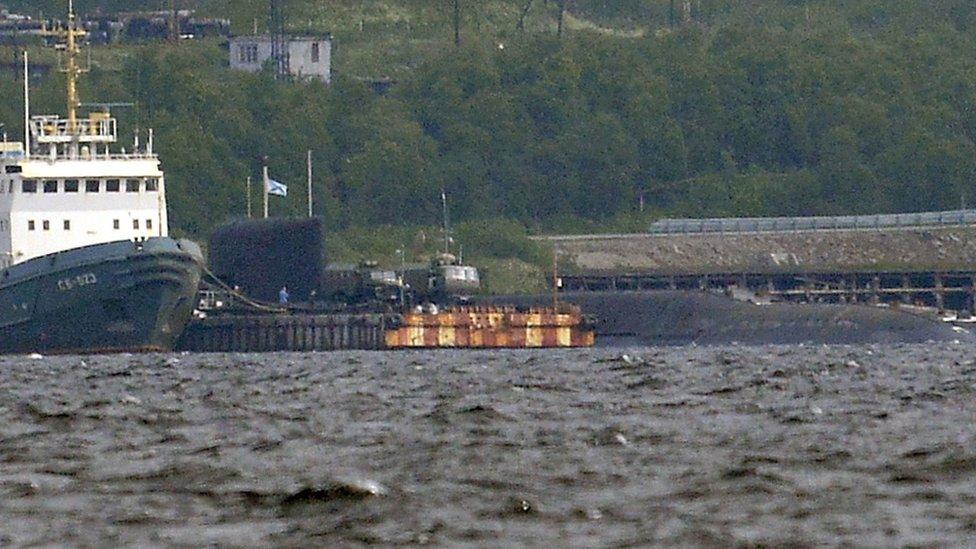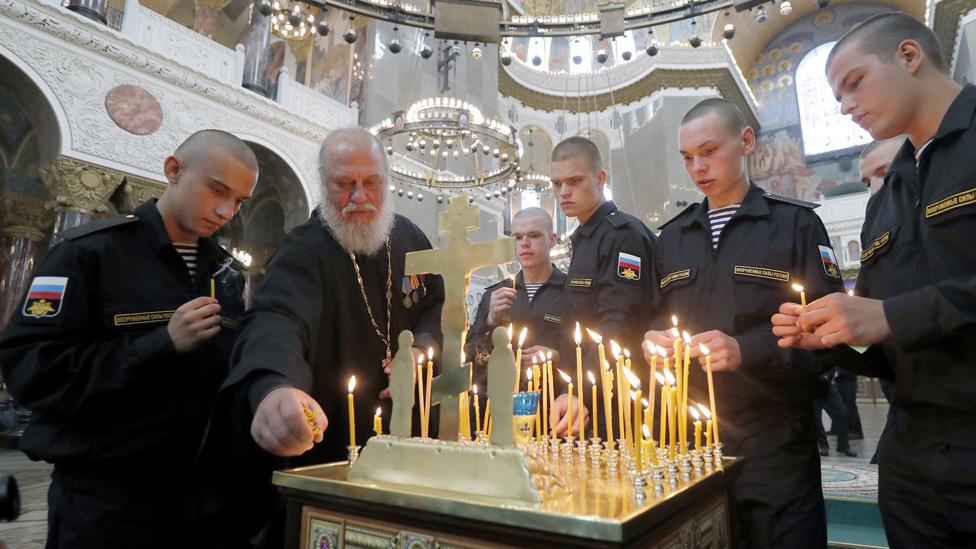Russia mini-sub fire: Putin issues heroism awards
- Published

The Russian Defence Ministry published these photos of the officers who died and named them
The Russian president Vladimir Putin has bestowed top state awards on four of the 14 submarine crew who died during a secret mission on 1 July.
The four officers, all captains, received Hero of Russia medals. Two other officers on board already had those medals for earlier missions.
The Kremlin said the crew heroically contained a fire, preventing it reaching the nuclear power unit.
They inhaled toxic smoke produced by the fire, the Kremlin said.
The other 10 who died in the disaster in the Barents Sea, also officers, received Russia's Order of Courage.
The surviving crew managed to get the deep-sea research vessel back to its Arctic base, Severomorsk, near Murmansk.
The bodies of the 14 dead were brought to St Petersburg for burial at the city's Serafim cemetery. Their naval unit is based in the city's Peterhof district.

Fresh flowers were laid at a Murmansk memorial erected after the 2000 Kursk disaster
The Russian government said it is confident that the secret submersible, which it refused to name, can be put back into service soon. The vessel had been exploring the Arctic seabed.
The government did not reveal details of the mission that turned into a disaster, citing official secrecy. The submersible was widely reported to be an AS-12 or AS-31 type nicknamed "Losharik".

Russia's Tass news agency reported that the officers were linked to the Russian military's top-secret Chief Directorate for Deep Water Research, known as GUGI.
One of the officers, Denis Dolonsky, was made a Hero of Russia in 2012. In that year he took part in the Arktika-2012 mission, Tass said, which involved collecting rock samples from the Arctic seabed - part of a Russian Arctic territorial claim.
The International Institute for Strategic Studies (IISS) reported, external that a Losharik vessel guided two Russian icebreakers, which drilled boreholes and collected seabed rock on the Mendeleev Ridge, intended to prove that the Russian continental shelf extends far under the Arctic Ocean.
A UN commission is assessing rival continental shelf claims in the Arctic, based on data submitted by Russia, Canada, the US, Norway and Denmark.
Read more on similar topics:
Unanswered questions
Russian media reports said that one of the submersible's sailors heroically rescued a civilian specialist from the burning battery compartment, then sealed the hatch.
But Pavel Felgenhauer, a military analyst at the independent Russian daily Novaya Gazeta,, external said it was a mystery why 14 sailors died from smoke inhalation when they would have all carried oxygen masks at all times and had access to emergency on-board oxygen supplies.
It is also a mystery, he wrote, why so many senior officers were on one mission. He speculated that they might have been testing new secret equipment or examining US seabed devices placed to track Russian submarines.
Mr Felgenhauer also asked why Russia would use a secret submersible capable of diving down to 6,000m (19,685ft), when the Barents Sea is on average only 220m deep.

Russia is in an international race to stake territorial claims in the Arctic, because the pristine region is believed to be rich in oil and gas and other minerals. Global warming is also opening up new Arctic sea routes, potentially valuable for trade.
On Thursday, Russia's Defence Minister, Sergei Shoigu, said the craft's nuclear power unit had "been fully isolated and nobody [was] in that section".
"The crew took all the necessary measures to protect the unit and it is in full working condition," he said. "This gives us hope that in quite a short time the vessel can be put back into service."
GUGI's main tasks are reported to include monitoring foreign underwater communication lines, recovering military equipment from the seabed and protecting Russia's own seabed communications cables.

Underwater tragedies
Accidents involving underwater vessels are rare. Here are some of the most serious:
The Argentine navy's ARA San Juan submarine with 44 crew disappeared during a routine patrol in the South Atlantic in 2017. The wreckage was found a year later
All 70 crew aboard China's Great Wall Ming-class submarine suffocated in 2003 when a diesel engine malfunctioned, consuming the vessel's oxygen supply
Russia's Kursk submarine sank in the Barents Sea in 2000 after a torpedo exploded during an exercise, killing all 118 on board, including 23 who survived the blast but died due to a lack of oxygen
The USS Scorpion sank in the Atlantic in 1968, possibly because a torpedo exploded, killing the 99 crew
The USS Thresher sank during diving tests in 1963, killing all 129 on board - the biggest submarine death toll in history

- Published3 July 2019

- Published4 July 2019
